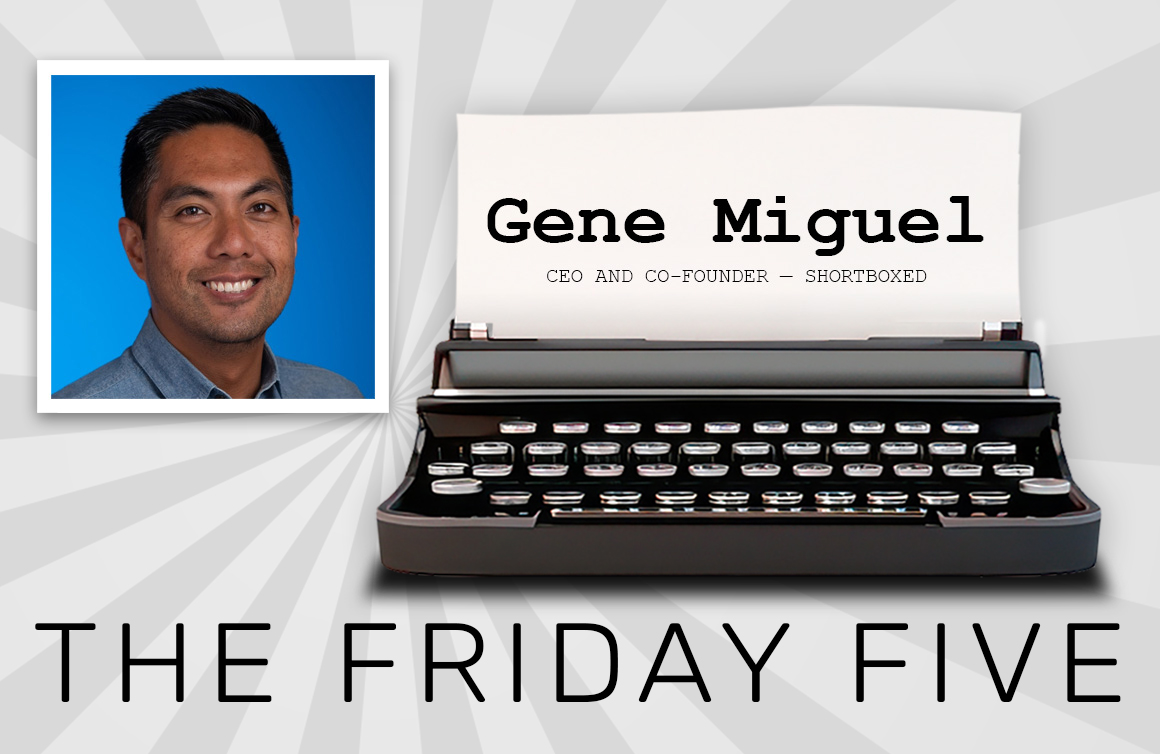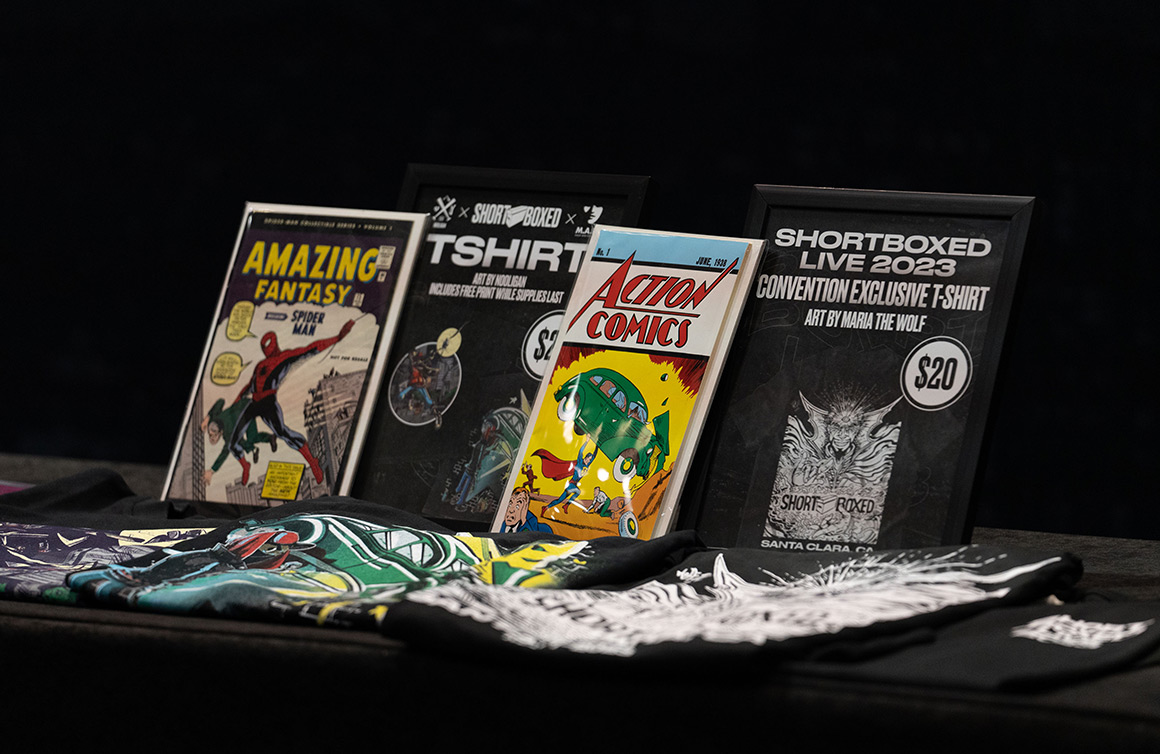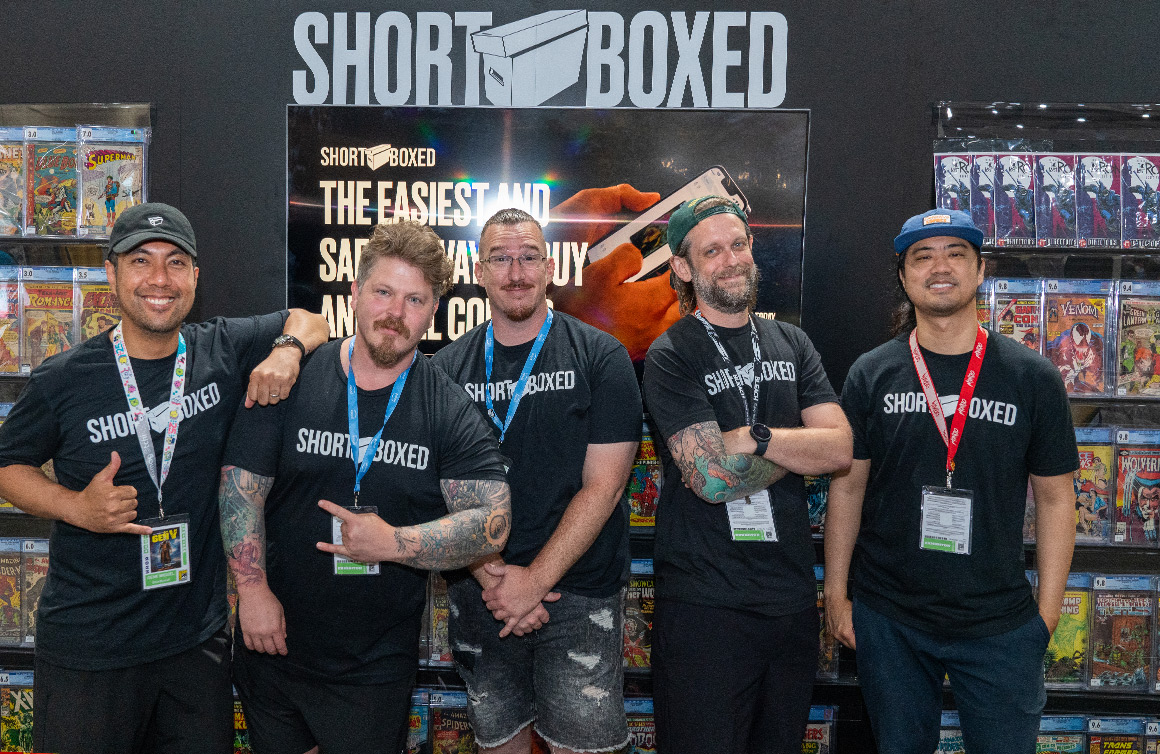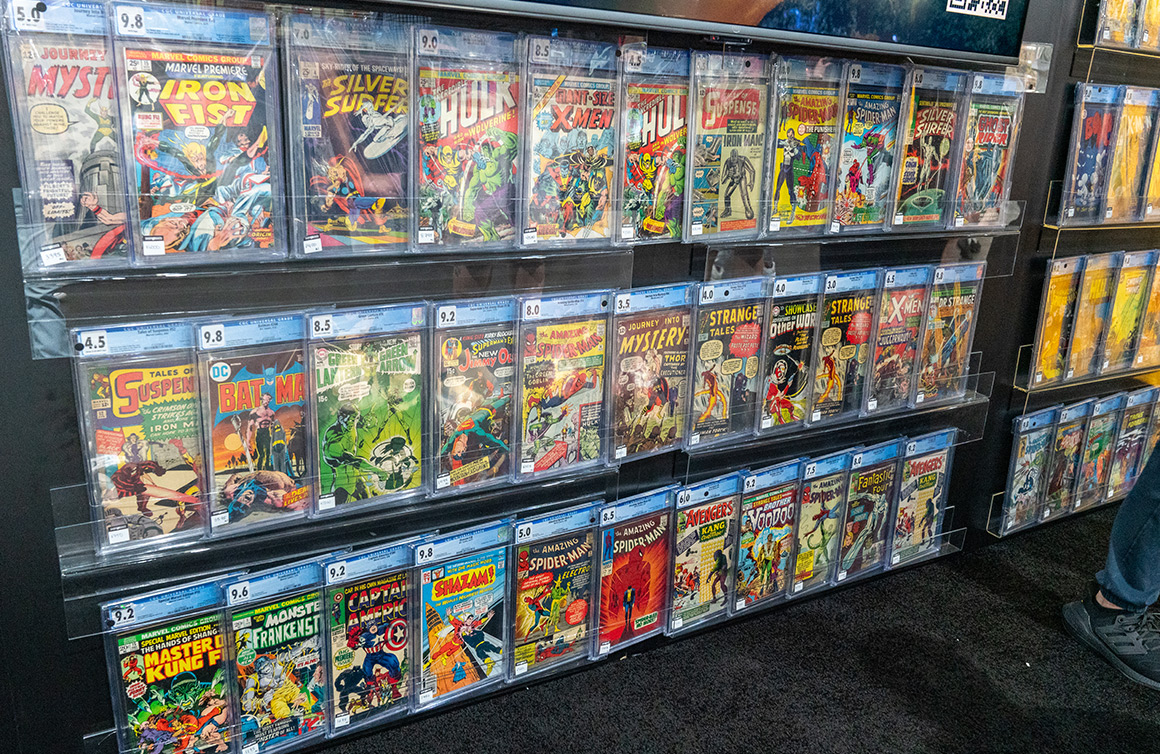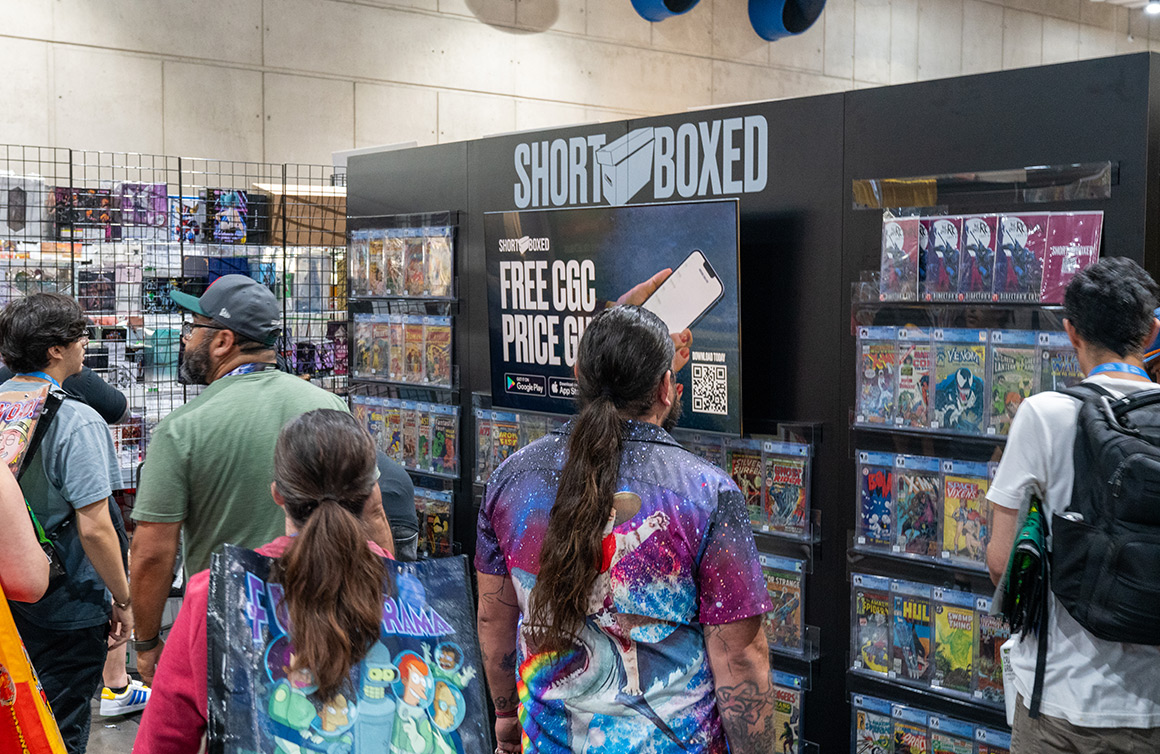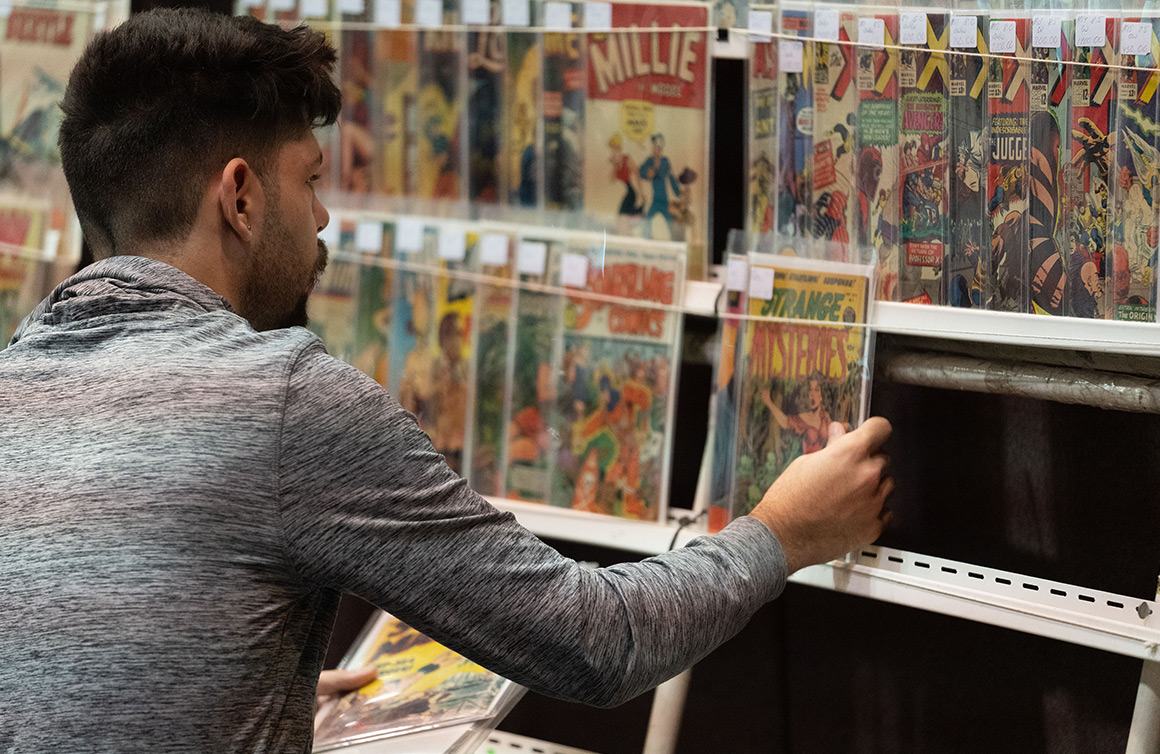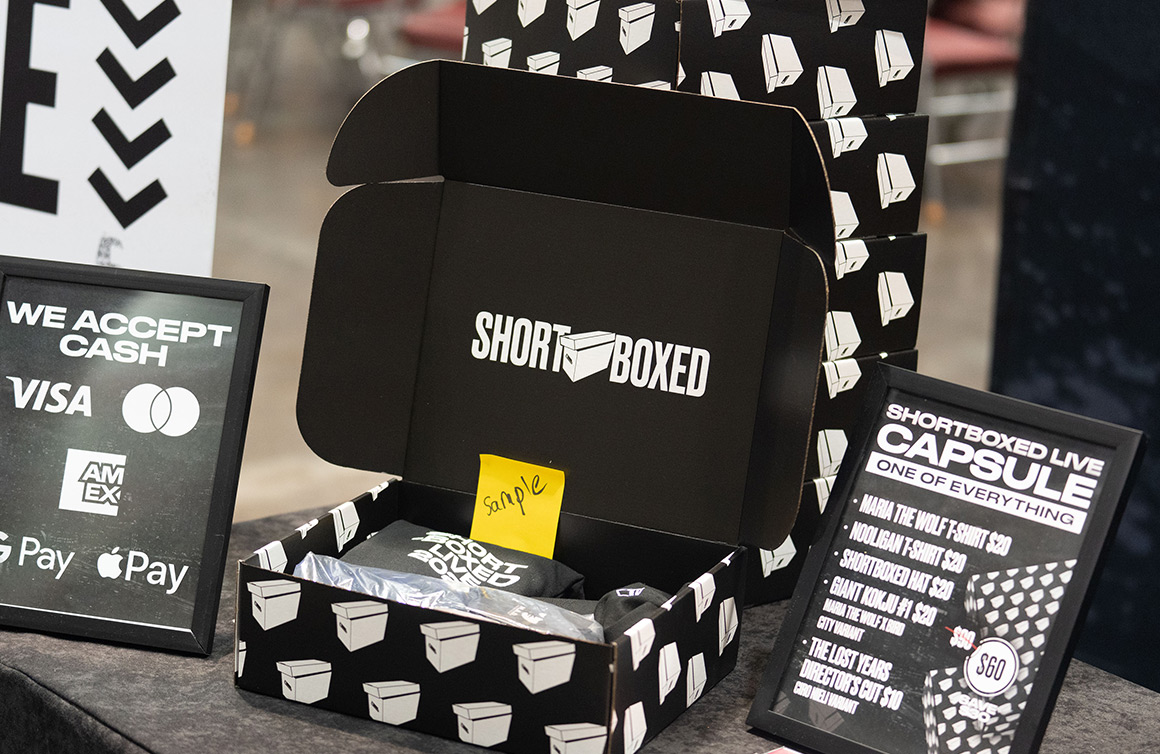What inspired the Shortboxed business model?
Being a comic book platform, I refer to the beginning as our origin story. It began with myself and my co-founder and chief technology officer, BJ Abordo — we’ve been collecting and reading comic books for our entire lives. About 10 years ago, we started a blog to connect with other comic book collectors — this was before there was a thriving YouTube comic community or an Instagram comic community, or even a thriving Facebook community. We wanted to start a blog to have a platform to connect with other collectors around the world. Through that process, we got to meet a lot of folks in the industry, a lot of the major dealers, got to make a lot of friends, and we actually became dealers ourselves.
BJ and I both worked in tech our entire careers. We took paid time off and worked nights and weekends to hit the convention circuit and became comic book dealers just for fun. Through that process of being on the other side of the table, we learned just how poorly and inefficiently the industry has been run for decades.
When you think about it, buying and selling comic books hasn’t really evolved since eBay was started back in the mid-90s. And, before that, since the late 1960s, it was run very manually. These are things that we always sort of understood as collectors, but seeing it firsthand was eye opening. I mean, it’s a multi-billion dollar annual market, the secondary market for comics is huge, and a lot of people would be surprised to hear that it’s that big. And, a lot of the major platforms are running on literally 20-year-old web technology or on completely manual processes on Excel spreadsheets.
So, being technologists, we felt an obligation to build what we feel is a modern platform for buying and selling comics, to leverage technology and innovation to push the industry forward. We started developing the app ourselves. We built a very simple version and launched it in March 2020 … you remember what happened in March 2020.
We had a big splashy launch for Shortboxed at C2E2 in Chicago, one of the biggest comic and entertainment conventions in the country. When we returned home to San Francisco, the whole city went into lockdown and the next couple of years we were in a global pandemic.
But, if there was a silver lining of a global pandemic, it was that it forced a lot of people to stay indoors and a lot of folks rediscovered old hobbies such as comic books and collectibles. There was a nice tailwind that put us in the spotlight because dealers no longer had shows to go to and comic book shops had to shut down and needed new platforms to sell. Not everyone likes eBay so it was serendipitous timing for us.
It was a real phenomenon — people were stuck at home going through their basements, attics, and closets finding old dusty comic books from years ago. It reignited a love and passion for the hobby. And with nothing else to do but shop online, a lot of people rediscovered the hobby.

How do people engage with Shortboxed on the buyer side and the seller side?
It’s pretty straightforward.
We consider ourselves the easiest place to buy and sell comic books. Shortboxed is a mobile-only app, there is no web platform and and that is by design. We wanted to build a mobile-first platform simply because the vast majority of people today do most of their shopping via mobile.
For sellers, it is the easiest way to submit books for sale anywhere, it’s easier than eBay. It’s even easier than posting something on Reddit or on Facebook Marketplace. You just take a picture of the front of the book, the back of the book, add your price, and hit Submit. You can submit a book for sale in literally 10 seconds. We designed Shortboxed to leverage technology and intelligent design to make it that simple — you don’t have to create a listing, whereas on eBay you have to take a picture on your phone, upload it to their website, create a listing, type up the description — you pretty much have to teach yourself HTML to make it look nice on eBay. On Shortboxed, you can create multiple listings in the time it takes to create one eBay listing.
On the buyer side, it’s even easier. I’m sure we’re all familiar with shopping on Amazon and the one-click checkout. It’s essentially the same process on Shortboxed. Once you set up your account, it’s as simple as just hitting the Buy button and checking out. You can also submit offers. All the features that you would expect to have on a traditional marketplace exist on Shortboxed — it’s just done very intelligently in terms of the design and user experience to make it seamless and frictionless.
Being focused on comic books allows us to build very specific features to make buying and selling easier. We can build a lot of cool features like including CGC Census — we can include a Census count for every book, we can show recent and historical sales for certain books, we can show all the information about the creators and all the special notes — whether it’s a first appearance or a classic cover or what have you. We also can show things like what we call FMV (fair market value) indicators — we show green if it’s a good deal, yellow if it’s fair, and red if it’s a premium price.

Shortboxed is promoted as “the easiest and safest way” to buy and sell graded comic books. What are some of the risks involved in these transactions?
Great question, and thank you for saying “graded” comic books.
When we launched up until around early July, we only allowed people to buy and sell graded comic books — this means third-party authenticated comic books that are sealed in tamper-proof cases with the condition grade, which is a numerical grade assigned to the book. The two biggest companies in this space are CGC and CBCS. Buying and selling a third-party authenticated book alone mitigates most of the risk because it’s authenticated.
Recently, we opened up the platform to non-authenticated books — what we call raw or non-graded comic books. When you start dealing with raw books, there are a lot of issues that can come up. Let’s use eBay and Facebook Marketplace as examples because they are sort of like the Wild West in this regard. Sellers may not know how to grade their books and will basically just assign a condition or grade to it or they’ll purposely over-grade the book and overstate the condition. They may not disclose issues with the book and they may not ship the book out. There is risk involved and buyers can get scammed.
Shortboxed is designed as a double-blind marketplace. This means that the seller doesn’t know who the buyer is, and the buyer doesn’t know who the seller is. That was done by design because buyers don’t necessarily care who they’re buying a comic book from. They do care that they are getting the book that they want, at the price that they’re willing to pay for the condition that it’s in. On the seller side, a lot of sellers don’t necessarily care who they’re selling to as long as they’re getting the price that they want for the book they are selling. Of course, there are exceptions — you like buying from people that you like. But for the majority of collectors, they don’t really care who is doing the buying or selling.
What this allows us to do is to facilitate the whole transaction. We capture the payment from the buyer and we provision the shipping label to the seller. If you’re a seller and you get a sale, you get an order confirmation, you get a prepaid shipping label, and you simply send the book out. As soon as it gets delivered, we remit payment back to the seller, less our 10% seller fee. Buyers can rest assured that we’re the ones capturing the payment and that the seller is not going to get paid out unless the book gets delivered successfully. We protect both sides.
On top of that, we offer full protections, full insurance, we also handle all the customer support between both sides, and we mediate between both parties. Should anything go wrong — let’s say USPS loses a package, for example — we’re the ones that mediate and make it right between the both the buyer and the seller. It’s virtually a zero-risk platform to buy and sell.

What trends have you witnessed over the past year in the buying and selling of graded comic books?
I think the easiest way to answer this is by not focusing on the past year, but by zooming out a little bit longer. I did refer to what we call the COVID spike but let’s zoom out even further.
A lot of these original books were printed in the late 1930s and early ’40s and the superheroes that we know today came out in the early ’60s, such as Spider-Man and X-Men. It was in the late ’60s into the 1970s when collecting became a hobby. That stayed consistent over the following few decades in terms of interest levels and values raising slowly over time. Then 12 or 13 years ago, the Marvel Cinematic Universe started with the first Iron Man film. That created this entirely new phenomenon where the characters that we all know and love are suddenly thrust into the mainstream. Sure, there had been movies and television shows over the decades, but not at this level or on this scale.
What we saw with the Marvel Cinematic Universe and the DC Cinematic Universe was these characters thrust into the spotlight and getting millions, maybe even billions, of eyeballs on them. That sent comic book collecting and the values of these books into the stratosphere. You have an incredible decade-long run of comic books going on this tear of increasing in value year-over-year. There’s never been this much excitement and demand for collectible comics over a sustained period.
That demand continued and then COVID pushed it up even further. After an incredibly long bull run in the general public markets, entering a recessionary period, and a down market, that also trickled down into collectibles. What we’ve seen in the past year to year-and-a-half is somewhat of a pullback in of 10 percent to 20 percent of peak COVID values — that bull run wasn’t necessarily sustainable. Now we see more realistic valuations in terms of these types of collectibles and that is ultimately healthy for the hobby.
I think now is a good time for folks who are new to the hobby, or who’ve been kind of on the sidelines, to enter. We’re at a nice stable time now where it can continue for decades more to come. It’s a little more inclusive for people’s budgets. Of course, if someone is going to buy Marvel’s Amazing Fantasy #15 — the first appearance of Spider-Man — that is going to be tens of thousands of dollars. It’s all relative, right?
There’s been a massive trend over the past couple of years where we’re seeing new different types of Spider characters and different types of multiverse characters. That has been an amazing trend: new types of characters introduced on both the big screen and the small screen, across video games, and in comics. It is making comics more accessible to everyone. I think that’s the best part about comics right now — there truly is something for everyone.

What does the remainder of 2023 hold for Shortboxed?
A lot of continued growth.
Since we launched in March 2020, we’ve had consistent month-over-month growth, I’m very proud to say that because that is just purely from the support of the community.
We will continue to improve the app and build new features. A big thing that we’re launching this fall is auctions. Today, Shortboxed is a direct listings marketplace — you list an item for sale and people can buy it outright. But, we will be building a full-featured auction platform where we will run event-style auctions in the app. That will be pretty exciting and I think a lot of the community will be stoked to see that.

The Shortboxed app is found on the App Store and Google Play. Learn more on the Shortboxed website.

